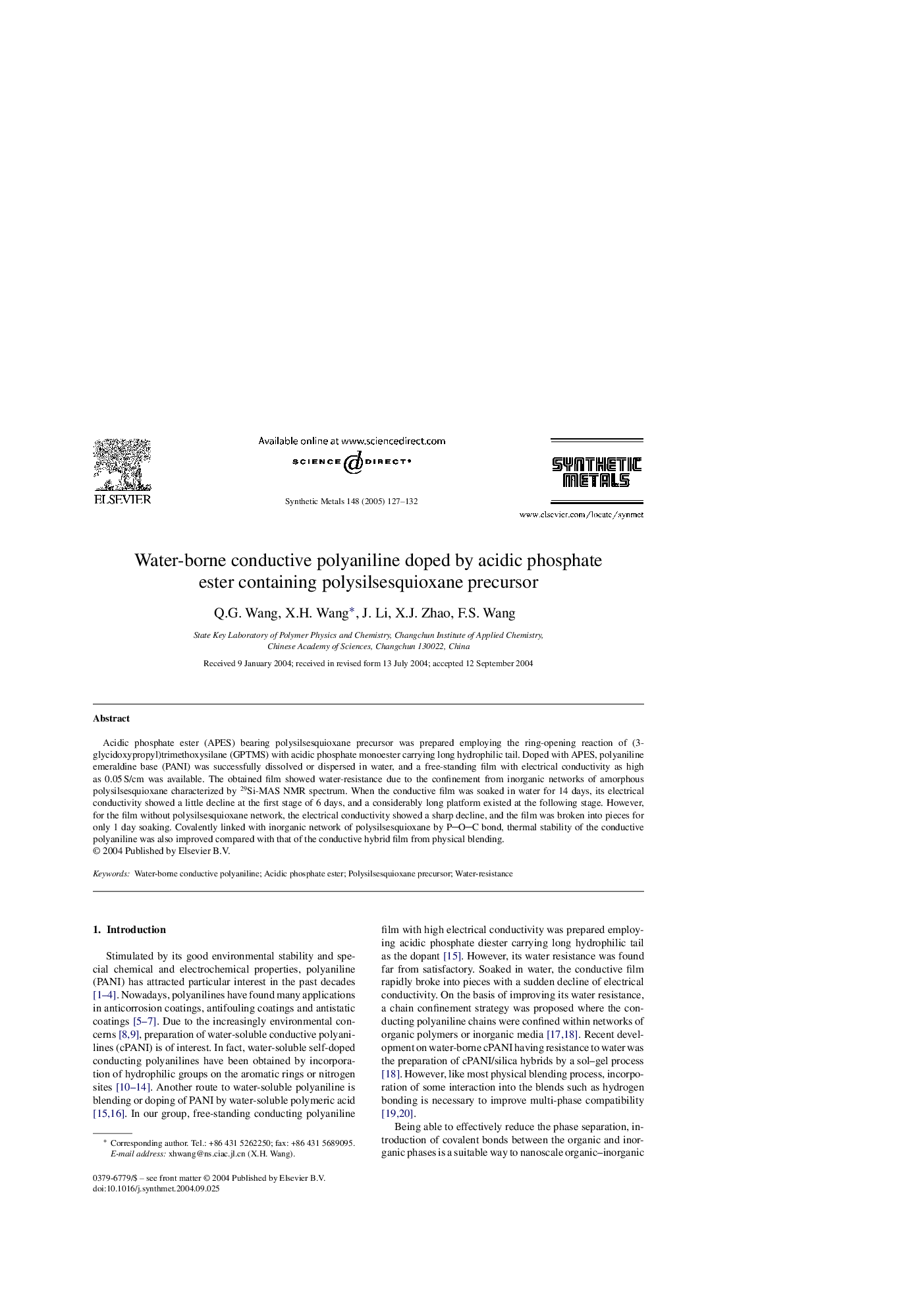| Article ID | Journal | Published Year | Pages | File Type |
|---|---|---|---|---|
| 10619313 | Synthetic Metals | 2005 | 6 Pages |
Abstract
Acidic phosphate ester (APES) bearing polysilsesquioxane precursor was prepared employing the ring-opening reaction of (3-glycidoxypropyl)trimethoxysilane (GPTMS) with acidic phosphate monoester carrying long hydrophilic tail. Doped with APES, polyaniline emeraldine base (PANI) was successfully dissolved or dispersed in water, and a free-standing film with electrical conductivity as high as 0.05Â S/cm was available. The obtained film showed water-resistance due to the confinement from inorganic networks of amorphous polysilsesquioxane characterized by 29Si-MAS NMR spectrum. When the conductive film was soaked in water for 14 days, its electrical conductivity showed a little decline at the first stage of 6 days, and a considerably long platform existed at the following stage. However, for the film without polysilsesquioxane network, the electrical conductivity showed a sharp decline, and the film was broken into pieces for only 1 day soaking. Covalently linked with inorganic network of polysilsesquioxane by POC bond, thermal stability of the conductive polyaniline was also improved compared with that of the conductive hybrid film from physical blending.
Keywords
Related Topics
Physical Sciences and Engineering
Materials Science
Biomaterials
Authors
Q.G. Wang, X.H. Wang, J. Li, X.J. Zhao, F.S. Wang,
